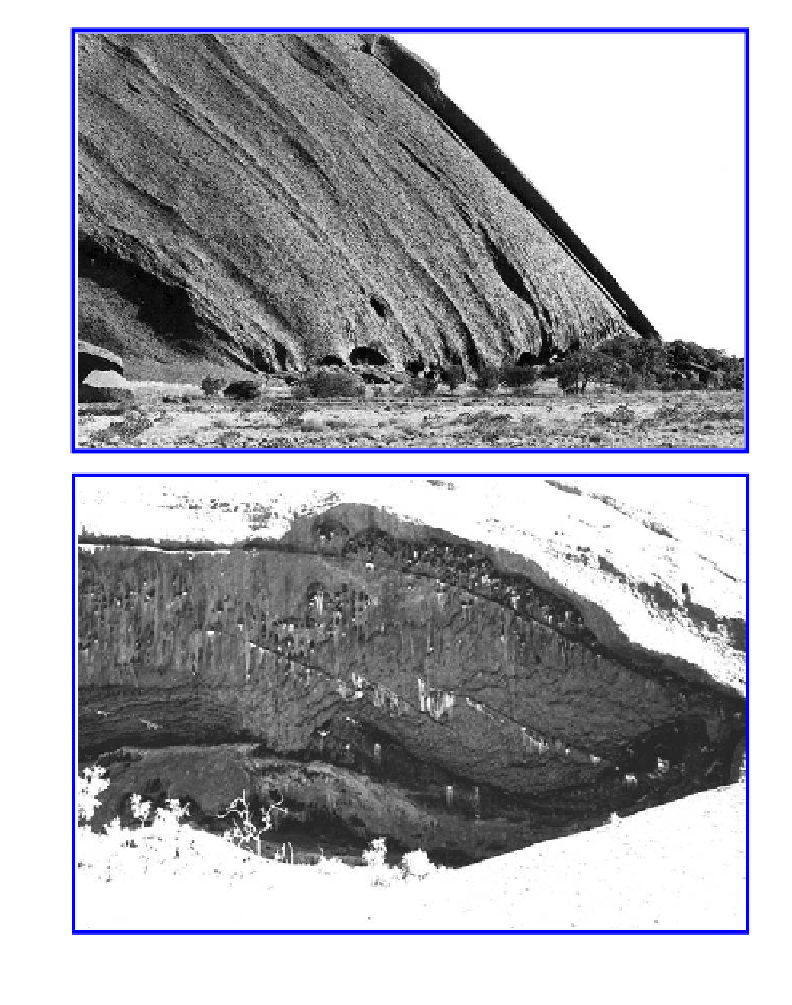Geology Reference
In-Depth Information
(a)
(b)
Figure 12.1.
Sheet structure in sandstone (a) at Ayers Rock, central Australia, in the Kangaroo Tail, (Wahrhaftig,
1965), (b) in en echelon pattern revealed in a cliff-foot cave at the base of the residual.
clearly-defined and open fractures. Several landforms are not as well or widely developed as on
granite, but they are developed in some degree. Thus, bornhardts are a common and characteristic
granite form, and they have their equivalents in sandstone and other arenaceous rocks (Young and
Young, 1992; Young, 1987). Like their granitic congeners many are developed on fracture-defined
blocks (
Figs 12.2a and b).
Thus, the prominent (200 m high) inselbergs of the Toledo district,
Central Spain, e.g. the Cerro Prieto, or the Cerro de Moraján, are outliers of Ordovician quartzite
surrounded by Precambrian schist (
Fig. 12.2c
).
Tower-like forms in sandstone are well represented
in the Hombori massif of Mali, in the Bungle Bungle massif of the east Kimberleys of Western
Australia, in the Monolith Valley of the southern Sydney Basin (inland from Nowra, in New South
Wales), in Arnhem Land and Roper River areas of the Northern Territory (St-Onge and McMartin,


